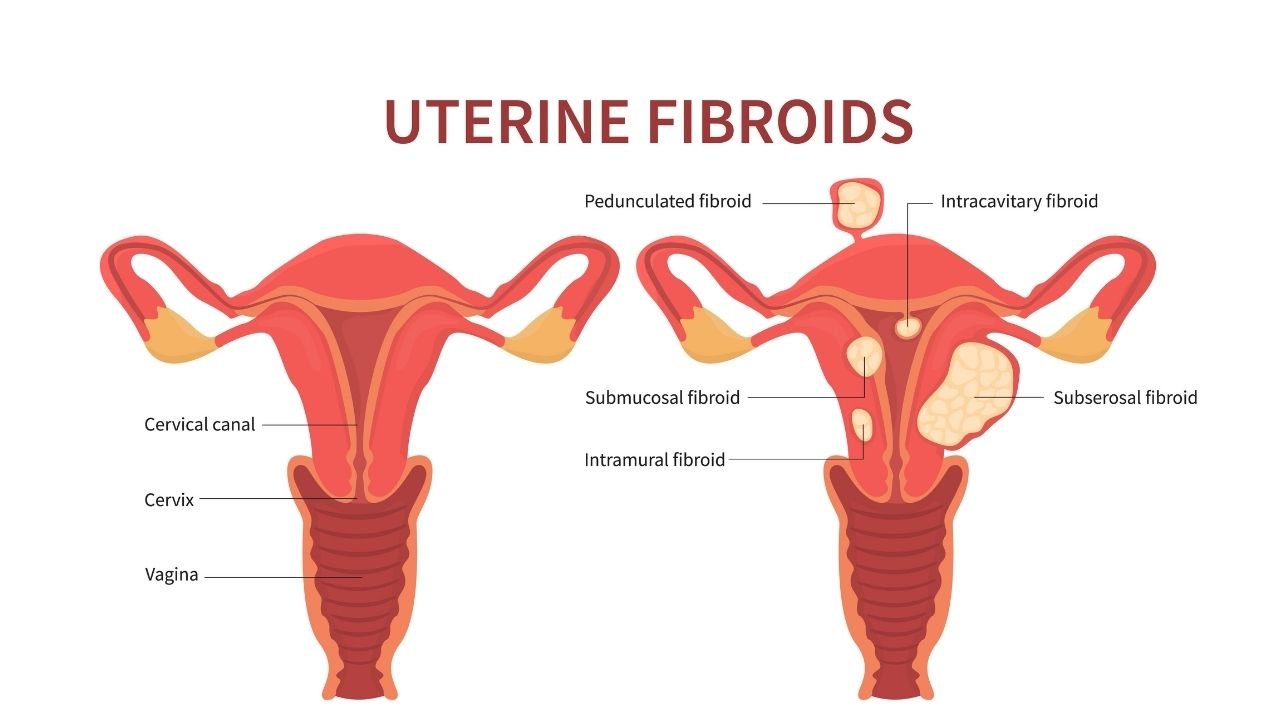Fibroids, also known as uterine fibroids or leiomyomas, are noncancerous growths or tumors that develop within the muscular wall of the uterus (womb). They are one of the most common types of tumors that affect women during their reproductive years. Fibroids vary in size, ranging from small, pea-sized nodules to large growths that can distort the shape and size of the uterus.Visit Our Clinic Or more info contact us!
Causes: The exact cause of fibroids is not well understood, but they are believed to develop from the abnormal growth of smooth muscle cells in the uterine wall. Hormones, particularly estrogen and progesterone, play a role in their growth and size.
fibroids are often discovered during routine pelvic exams or through imaging studies, such as ultrasounds or MRI. Further diagnostic tests may be necessary to determine the size, location, and number of fibroids.

Types of Fibroids:
- Intramural Fibroids: These are the most common and develop within the muscular wall of the uterus.
- Subserosal Fibroids: These grow on the outside of the uterus and may create pressure on nearby organs.
- Submucosal Fibroids: These are located just beneath the lining of the uterine cavity and can lead to heavy menstrual bleeding and other symptoms.
- Pedunculated Fibroids: These are attached to the uterine wall by a stalk-like structure and can grow inside or outside the uterus.
Symptoms:
- Heavy menstrual bleeding (menorrhagia)
- Prolonged menstrual periods
- Pelvic pain and pressure
- Frequent urination or difficulty emptying the bladder
- Pelvic pain during intercourse
- Lower backache or leg pains
- Enlarged abdomen or a feeling of fullness
Treatment
- Medications to control symptoms (e.g., pain relievers, hormonal therapy)
- Uterine artery embolization (a minimally invasive procedure to block blood flow to the fibroids)
- Myomectomy (surgical removal of fibroids, preserving the uterus)
- Hysterectomy (surgical removal of the uterus, which is a definitive treatment)
- Endometrial ablation (a procedure to remove or destroy the uterine lining, often for smaller fibroids)
Risk Factors:
- Family history of fibroids
- Age (more common in women aged 30-40)
- African-American ethnicity (higher incidence)
- Obesity
- Hormonal factors
Enquire Now
